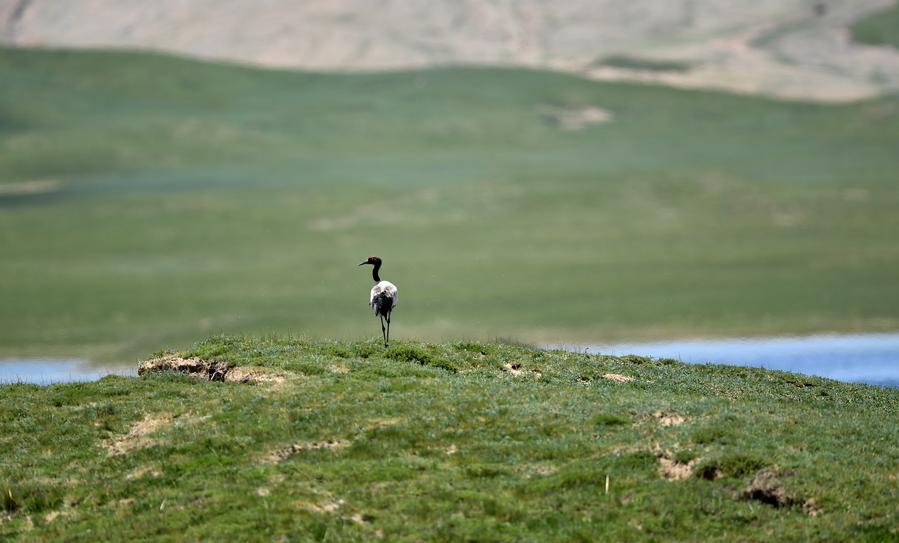

In recent years, Xining Wildlife Park has gained national attention for its charismatic wildlife, including snow leopards, Pallas's cats and Chinese desert cats. But less known is its long-running work in rescuing and breeding black-necked cranes. Thanks to such efforts, the protection of black-necked cranes has made significant progress. In 2020, the International Union for Conservation of Nature has downgraded its status from vulnerable to near threatened.

Yangtze sturgeon have managed successful natural spawning in China's Chishui River, a tributary of the country's longest waterway -- the Yangtze River, after the removal of over 300 small hydropower stations in the river basin, marking a breakthrough for the conservation of this critically endangered species.

Chinese researchers have identified a green sea turtle nesting site at Yongshu Reef, part of the Nansha Islands in the South China Sea, according to an ecological and environmental research station under the South China Sea Institute of Oceanology, Chinese Academy of Sciences. The discovery was made during routine ecological monitoring work, when scientific staff found an approximately 30 cm-deep, irregular, circular depression in the sandy area of Yongshu Reef, surrounded by disturbed sand particles.

Chinese researchers have successfully reintroduced Petrocosmea grandiflora, a critically endangered plant long thought lost, into its natural habitat in the sinkholes of Mengzi City, in the Honghe Hani and Yi Autonomous Prefecture of southwest China's Yunnan Province.
China unveiled its first digital platform dedicated to tropical biodiversity on International Biodiversity Day on Thursday, offering global access to over 90,000 verified species records. The "Xishuangbanna biodiversity platform," developed by the Chinese Academy of Sciences' Xishuangbanna Tropical Botanical Garden, is now globally accessible. The platform showcases the region's rich ecological heritage.

The Chinese Academy of Sciences (CAS) unveiled the 2025 catalogue of biological species in China on Thursday, documenting a total of 162,717 species and infraspecies, including dragonflies and earthworms for the first time. "Biodiversity is the foundation of sustainable development, and a species catalogue reflects the richness of a country or region's biological resources," said Ma Keping, deputy director and secretary-general of the Biodiversity Committee of the CAS.

86-10-68597521 (day)
86-10-68597289 (night)

52 Sanlihe Rd., Xicheng District,
Beijing, China (100864)

